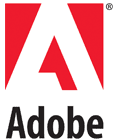Schedule
September 5th—Workshops
09:00–17:00 / Collaboration, Creativity & Consensus in User Experience Design by Leisa Reichelt
09:00–17:00 / Microformats by Jeremy Keith and Tantek Çelik
September 6th—Workshops
09:00–17:00 / Principles & Practices for Successful Experience Design by Peter Merholz
09:00–17:00 / Building the Social Web with Tagging/Folksonomies by Thomas Vander Wal
20:00–01:00 / Pre-party at Heist
September 7th
9:00 / Registration Opens (tea, coffee & pastries)
10:00–10:15 / Opening remarks
10:15–11:00 / The Dawning of the Age of Experience by Jared Spool
Experience design is no longer a nice-to-have luxury of a few organisations with tons of money and exceptional visionary management. It’s become commonplace for organisations that build products and websites. Experience Design is a centerpiece of boardroom discussions and quickly becoming a key performance indicator for many businesses.
However, you can’t just hire a couple of ‘experience designers’ and tell them, “Go do that voodoo that you do so well.” Today’s business environment forces us to build multi-disciplinary teams, compiling a diverse group of skills and experiences to handle the many facets of the technical, business, and user requirements.
In his usual entertaining and insightful manner, Jared will talk about what it takes to build a design team that meets today’s needs. See how successful experience design integrates the needs of the users with the requirements of the business. See how it is learned, but not available through introspection. Learn how experience design must be invisible to succeed and why it is cultural, multi-disciplinary, and thrives best in an ‘educate and administrate’ environment.
You’ll see examples of designs from Apple’s iPod, Netflix, the Mayo Clinic, and Southwest Airlines, to name a few.
11:00–11:30 / Break (tea, coffee & biscuits)
11:30–12:15 / Experience Strategies by Peter Merholz
Engage in a deep dive into the importance of experience. In this session Peter will cover the historical perspective; lay out the evolution of product categories; demonstrate the competitive advantage that experience provides; explain the importance of thinking about your products in a systems fashion; and cap it off with a discussion of experience strategies and how they can provide stars to sail your ship by.
12:15–13:00 / Waterfall Bad, Washing Machine Good by Leisa Reichelt
There is a commonly held belief that Agile Methods and User Centred Design do not play nicely together. On the contrary, Agile and UCD have much to offer each other. Each can learn and benefit from the other, and work together as a robust design and development methodology.
Including an introduction to the principles and practices of Agile Methodologies, this presentation explores the opportunities for UCD in an Agile environment, how designers can shape Agile to better support their work, and what designers can learn from Agile methods.
13:00–14:30 / Lunch (not provided)
14:30–15:15 / Good vs. Great Design by Cameron Moll
It’s easy to poke fun at bad design, but it’s far more challenging and rewarding to discern differences between good design and great design. This session will teach you practical design techniques for tipping the scales of greatness in your favor, using a blend of graphic design theory, human computing principles, and a communication-centric approach. Learn the difference between concepts such as influence vs. inspiration or machine efficiency vs. user efficiency.
15:15–16:00 / Human Traffic by George Oates & Denise Wilton
Denise and George want to talk to you about a few community-based projects they’ve worked on. They’ll delve into strategies and ideas around building a sense of place, and discuss the dynamics they have observed by watching people get comfortable… so comfortable there’s a sense of ownership and possession.
16:00–16:30 / Break (tea, coffee & biscuits)
16:30–17:15 / The Experience Stack by Matt Webb
Here are two ways of looking at a television: a TV is a display surface in my home which can show video which is broadcast or kept on storage media. And then: television is a friend who starts conversations between me and other people.
Products aren't only their aesthetic form and feature lists in catalogues. We live alongside them, and they open us to experiences. We first spy them across a crowded shop floor (then take them home and unwrap them); we get to know them, are frustrated by them, are pleased by them; we socialise with them and our other friends.
The experience of a product is what we feel and what guides us through our lives together. Every time we cross paths, there’s a hook for experience. The sequence of these communicates the brand, and can be variously playful, engaging, educational or however we choose to colour it.
Being aware of how this happens helps us design that experience. Through his favourite on-screen apps and physical, plastic gadgets, Matt looks at the whole experience stack – from the moment-by-moment feedback in user interface to large, complex ideas in critical design – and discusses how we can apply these ideas to our own projects.
17:15–18:00 / Designing for a Web of Data by Tom Coates
Design patterns for brochureware and editorial sites are well-established. In fact, they’re so simple and formulaic that even waterfall development processes can churn them out. A producer has an idea, a designer mocks it up in Photoshop and then client side types and engineers go all agile on its ass.
But what happens when you’re pushing into web apps or social media? What happens when an absence of heirarchy makes left-hand navigation redundant? What do you do when design practice blurs into URLs and data structures, and where your service breaks the frame of the browser and starts appearing in hardware, in desktop applications or on other people’s sites?
In this session, Tom will talk about new literacies that designers need to build things that are native to a web of data, the blurring and interplay between designers and developers and what it means to rapidly iterate in small multi-disciplinary teams to find the heart and soul of a new concept.


















